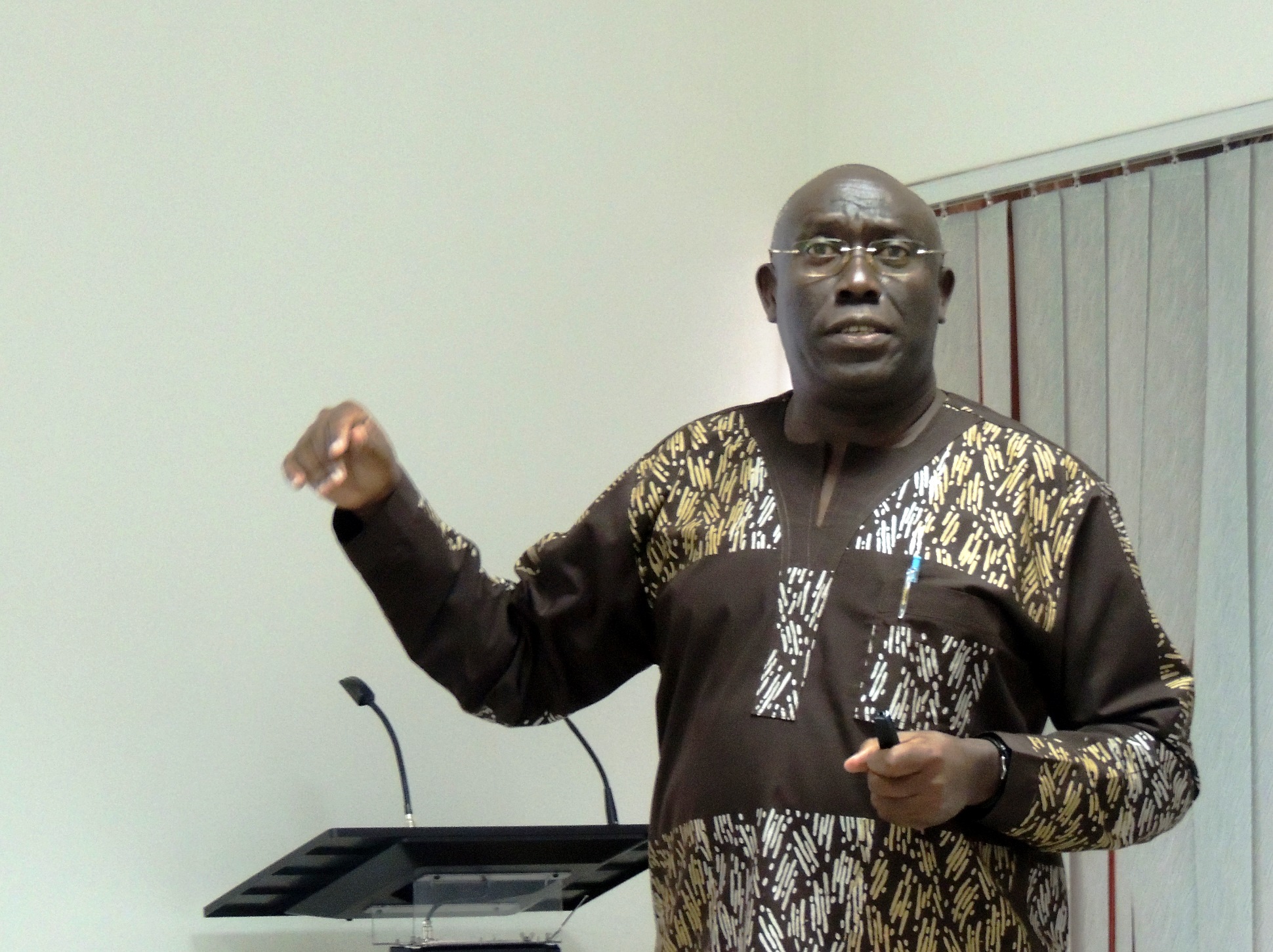Managing complex partnerships to deliver innovative integrated solutions to help smallholder farmers to increase their production and move out of hunger and poverty has not been as trouble-free as a walk in the park. It has been challenging
with many lessons learned along the way but it is all for a good cause and a lot of progress has been made. Dr Mateete Bekunda, Chief Scientist for Africa RISING East and Southern Africa Project, was speaking at a seminar in IITA’s Eastern Africa Hub, Dar es Salaam, Tanzania, on 22 June 2015.
Dr Bekunda said one of his key tasks had been to guide scientists working on single components of complicated farming systems to work together to develop aggregated practical agricultural innovations to increase productivity, improve nutrition, and transform the lives of smallholder farmers.
He described three types of partnership under Africa RISING: “Type 1 partners conduct farmer-driven research and are mostly from CGIAR and National Agricultural Research Systems (NARS). Technology delivery and scaling drive Type 2 partnerships and therefore the number of target farmers increases dramatically. They include the public sector, private sector, media, extension programs, USAID-supported development projects, and schools. Type 3 partners are usually conducting activities that complement those of Africa RISING.”
Identifying the partners
Dr Bekunda said that Africa RISING had started by supporting quick-win projects which brought scientists together to conduct mainly desktop and short survey studies that provided information for the design of subsequent research directions.
It is mainly from this pool of scientists that Type 1 partners were identified and given the task to develop joint project proposals to generate multidisciplinary integrated plans of action. This led to the formation of research teams working in three sites of Kongwa and Kiteto, Babati, and Malawi. These areas were selected based on their agro-ecological potentials which necessitated the generation of targeted technologies.
Recently the program has moved to Zambia in partnership with a program with similar objectives of sustainable intensification, Sustainable Intensification of Maize-Legume Systems for the Eastern Province of Zambia (SIMLEZA).
“By the end of year II, the team members had more appreciation of disciplinary integration. The Babati team, for example, merged the original nine work packages into four research themes for better planning of activities that enhanced integrated research. The program has also been responsive and committed to tackling emerging challenges that would threaten integration. One example is the deadly Maize Lethal Necrosis Disease (MLND),” he said.
Challenges and lessons learned
Dr Bekunda summarized the lessons he had learned and which had contributed to the successful management of the partnership. These included having a good relationship with donors, such as the program has had with USAID, who have been closely following its progress and advising on challenges. The second has been identifying the right people to work with, those who are committed to the program and provide good leadership.
“The program calls for the leader to be innovative, a good listener and learner. To overcome the other challenge of staff turn-over, there must be trust and harmony and regular meetings and communication among all the partners. This facilitates better integration and implementation.”
“Other important lessons learned,” he concluded, “were networking with other organizations and programs, working closely with the communications department to capture achievements for stakeholders’ information, and lastly, showing appreciation.”
The ESA Project and its Chief Scientist are now looking forward to its second phase which would focus on polishing the integrated technologies and scaling them up and out to more farmers.





No Comments